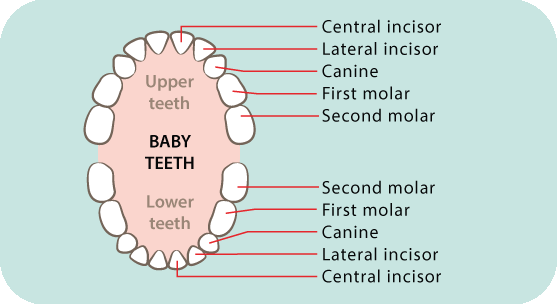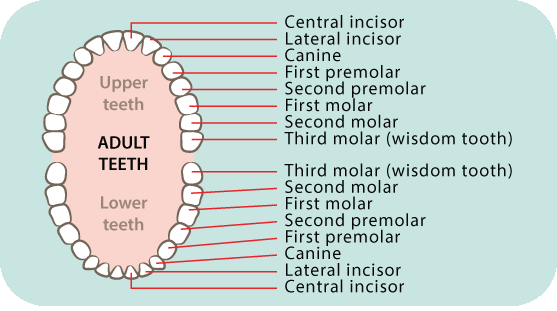How To Get Toddler To Brush Teeth
Toddler teeth development
Children get teeth at different times, but first teeth usually appear between 6 and 10 months. In some children, teeth appear as early as 3 months. In others, they don't arrive until around 12 months.
Baby teeth can arrive in any order, although the central bottom teeth are often first. All 20 baby teeth will usually arrive by the time your child is 3 years old.
The 32 adult teeth replace the baby teeth between the ages of 6 and 20 years.


Dental care: cleaning toddler teeth and gums
Toddler teeth need cleaning twice a day – in the morning and before bed.
Use a small, soft toothbrush designed for children under 2 years. Just use water on the toothbrush until your child is 18 months old, unless a dentist tells you otherwise. At 18 months, you can start using a pea-sized amount of low-fluoride toothpaste, unless a dentist recommends a higher fluoride strength.
Your child can start helping to clean their teeth at around 2 years of age. Letting your child hold the toothbrush with you will help them feel they're part of the action. But your child needs your help and supervision with cleaning teeth until they're about 8 years old.
Teeth cleaning alone isn't a guarantee against tooth decay. Diet is also important. Avoid giving your child sugary foods and sugary drinks like fruit juice, soft drink and flavoured milk.
The best way to brush your child's teeth
You might like to try the following routine when brushing your child's teeth:
- Stand or sit behind your child so that your child feels secure. Brushing teeth in front of a mirror is good too, because it lets you see your child's mouth.
- Cup your child's chin in your hands with their head resting against your body.
- Angle the bristles of the toothbrush towards the gum. Move the brush in gentle circles to clean the outer and inner sides of the teeth and gums.
- Brush back and forth on the chewing surfaces of the teeth.
- Gently brush your child's tongue.
- Encourage your child to brush without swallowing. When your child starts using toothpaste, get them to spit it out. There's no need to rinse after brushing because the fluoride toothpaste left behind protects your child's teeth.
If you're using anelectric toothbrush, avoid moving the brush in circles. Keep your hand still, and guide the brush across your child's teeth and gums.
Tips to make brushing teeth easier
Toddlers often don't like brushing their teeth. But even a quick brush is better than nothing, because it helps your child learn that brushing teeth is a normal part of the daily routine.
Children are more likely to go along with cleaning teeth if it's fun. Here are some ideas:
- Sing while you're brushing. You could try 'This is the way we brush our teeth, brush our teeth, brush our teeth, so early in the morning'.
- Pretend the toothbrush is a train. You could try saying 'Toot toot chugga chugga' as you move the brush around your child's teeth.
- Let your child play with their favourite toy while you're brushing.
Cleaning and caring for children's teeth early on sets up good dental habits for life.
Toothbrushes
It's important tochoose the right toothbrush – one designed especially for children aged 2-5 years. These toothbrushes have small oval heads, soft bristles of different heights and non-slip, cushioned handles. They also often have cartoons and fun designs on the handle, which your child might like.
The novelty of electric toothbrushes might also appeal to your child. Some electric toothbrushes can give a slightly better clean than manual brushes, but it's best to go with what your child prefers.
Keeping the toothbrush clean
After cleaning your child's teeth and gums, rinse the toothbrush with tap water.
Store the toothbrush upright in an open container to allow it to air-dry.
You should replace toothbrushes every 3-4 months, or when the bristles get worn or frayed.
Toothpaste and fluoride
You can start using a pea-sized amount of low-fluoride toothpaste on your child's toothbrush from18 months of age.
Fluoride is a safe mineral that helps keep teeth strong and prevents tooth decay.
Mosttap water in Australia has very low amounts of added fluoride.
Fluoride works best when you get it in very small amounts throughout the day in fluoridated tap water, foods and drinks containing fluoride, and low-fluoride toothpaste.
Visiting the dentist
Children should visit the dentist to have their teeth checked by about 12 months of age or when their first tooth comes through, whichever happens first. This lets your child get to know the dentist. It also gives you and your dentist a chance to talk about your child's needs and plan your child's dental care.
Talk to your dentist about how often your child needs to return for check-ups. Dentists usually recommend every 6-12 months.
Your child might also see other oral health professionals, depending on your child's needs. These include dental therapists, dental hygienists and oral health therapists or specialist dentists like paediatric dentists.
Dental health care in Australia
Dental care for children is often free in thepublic dental system, up to a certain age. For details of public dental providers, see your state or territory's health department website.
There areprivate dental clinics all over Australia. You'll have to pay for your appointments, but people with private health insurance might get some money back from their private health fund.
If you're eligible, the Australian Government's Child Dental Benefits Schedule covers basic dental services for children aged 2-17 years at most private and public dental clinics.
How To Get Toddler To Brush Teeth
Source: https://raisingchildren.net.au/toddlers/health-daily-care/dental-care/dental-care-toddlers
Posted by: davisfacheneve.blogspot.com

0 Response to "How To Get Toddler To Brush Teeth"
Post a Comment